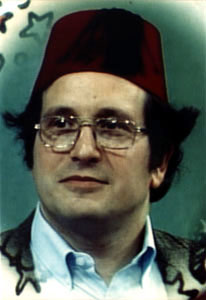
Gerald Jay Sussman is the Panasonic Professor of Electrical Engineering at the Massachusetts Institute of Technology (MIT). He received his S.B. and Ph.D. degrees in mathematics from MIT in 1968 and 1973 respectively. He has been involved in artificial intelligence (AI) research at MIT since 1964. His research has centered on understanding the problem-solving strategies used by scientists and engineers, with the goals of automating parts of the process and formalizing it to provide more effective methods of science and engineering education. Sussman has also worked in computer languages, in computer architecture and in Very Large Scale Integration (VLSI) design.
The Prix Ars Electronica is one of the best known and longest running yearly prizes in the field of electronic and interactive art, computer animation, digital culture and music. It has been awarded since 1987 by Ars Electronica.
Karl Sims is a computer graphics artist and researcher, who is best known for using particle systems and artificial life in computer animation.
Joanna Berzowska is an Associate Professor of Design and Computation Arts at Concordia University in Montreal. Her work and research deal primarily with "soft computation": electronic textiles, responsive clothing as wearable technology, reactive materials and squishy interfaces.
Kenneth E. Rinaldo is an American neo-conceptual artist and arts educator, known for his interactive robotics, 3D animation, and BioArt installations. His works include Autopoiesis (2000), and Augmented Fish Reality (2004), a fish-driven robot.

Mary Flanagan is an artist, author, educator, and designer. She pioneered the field of game research with her ideas on critical play and has written five books. She is the founding director of the research laboratory and design studio Tiltfactor Lab and the CEO of the board game company Resonym. Flanagan's work as an artist has been shown around the world and won the Award of Distinction at Prix Ars Electronica in 2018.

Casey Edwin Barker Reas, also known as C. E. B. Reas or Casey Reas, is an American artist whose conceptual, procedural and minimal artworks explore ideas through the contemporary lens of software. Reas is perhaps best known for having created, with Ben Fry, the Processing programming language.

Golan Levin is an American new media artist, composer, performer and engineer interested in developing artifacts and events which explore supple new modes of reactive expression.
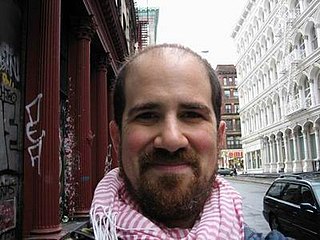
Zachary Lieberman is an American new media artist, designer, computer programmer, and educator.
Stacey Spiegel (1955) is a Canadian artist and new media designer.
Benjamin Fry is an American designer who has expertise in data visualization.

Neri Oxman is an American–Israeli designer and professor at the MIT Media Lab, where she led the Mediated Matter research group. She is known for art and architecture that combine design, biology, computing, and materials engineering.
Maggie Orth is an American artist and technologist who helped create the field of E-textiles. Her 2001 MIT Media Lab PhD thesis, Sculpted computational objects with smart and active computing materials and associated publications and patents are among the early work in this field. She was named a 2007 United States Artists Target Fellow. The United States Artists foundation describes her as "A pioneer of electronic textiles, interactive fashions, wearable computing, and interface design". She founded "International Fashion Machines"., which created e-textile products.

Ars Electronica Linz GmbH is an Austrian cultural, educational and scientific institute active in the field of new media art, founded in Linz in 1979. It is based at the Ars Electronica Center (AEC), which houses the Museum of the Future, in the city of Linz. Ars Electronica's activities focus on the interlinkages between art, technology and society. It runs an annual festival, and manages a multidisciplinary media arts R&D facility known as the Futurelab. It also confers the Prix Ars Electronica awards.
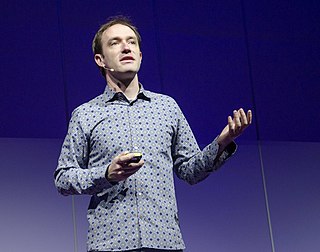
James Patten is an American interaction designer, inventor, and visual artist. Patten is a TED fellow and speaker whose studio-initiated research has led to the creation of new technology platforms, like Thumbles, tiny-computer controlled robots; interactive, kinetic lighting features; and immersive environments that engage the body.
Edwin van der Heide is a Dutch sound artist and composer known for his immersive installations and performances, currently living in Rotterdam.
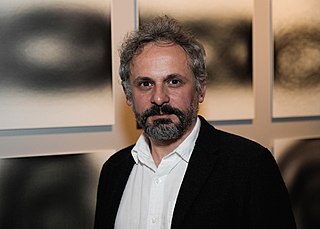
Mauro Martino is an Italian artist, designer and researcher. He is the founder and director of the Visual Artificial Intelligence Lab at IBM Research, and Professor of Practice at Northeastern University. He graduated from Polytechnic University of Milan, and was a research affiliate with the Senseable City Lab at MIT. Mauro was formerly an Assistant Research Professor at Northeastern University working with Albert-Laszlo Barabasi at Center for Complex Network Research and with David Lazer and Fellows at The Institute for Quantitative Social Science (IQSS) at Harvard University.

Behnaz Farahi is an Iranian-born American architect, designer and educator. She is best known for her designs of interactive wearables and installations.
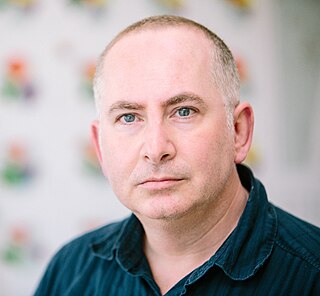
Ben Rubin is a media artist and designer based in New York City. He is best known for his data-driven media installations and public artworks, including Listening Post and Moveable Type, both created in collaboration with statistician and journalism professor Mark Hansen. Since 2015, Rubin has served as the director of the Center for Data Arts at The New School, where he is an associate professor of design.

Yuri Suzuki is a Japanese artist, designer, and musician. Primarily known for the design of sound-based objects, Suzuki is a partner of the London office of Pentagram.












